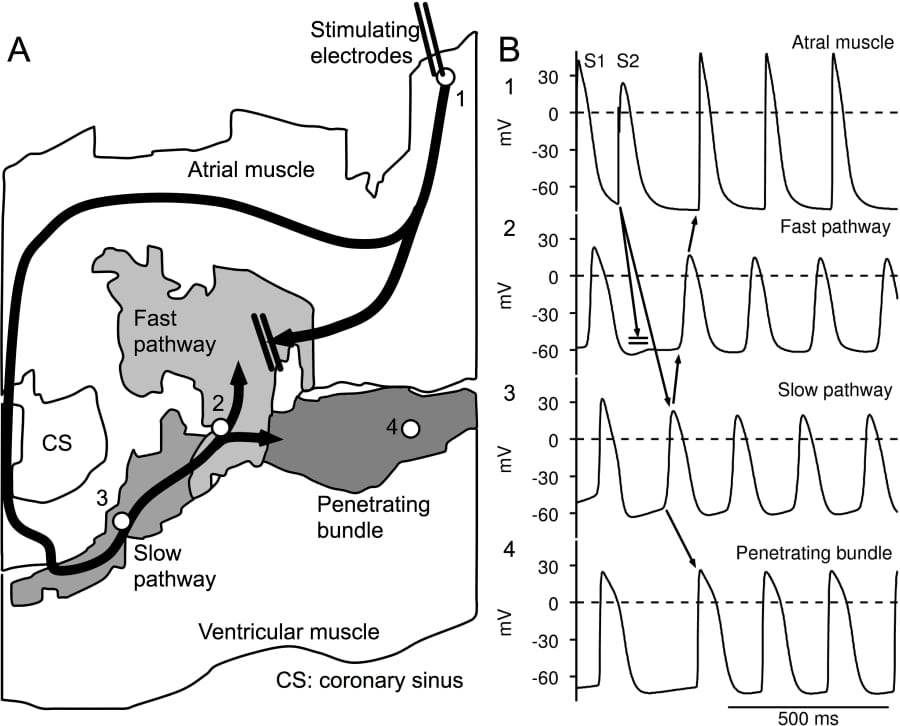We have investigated the mechanism underlying atrioventricular (AV) nodal reentry using computer simulation. Based on histology and immunohistochemistry, we developed an anatomical model of the rabbit AV node (array of 45,694 nodes) including atrial muscle, transitional tissue, inferior nodal extension, penetrating bundle and ventricular muscle. We assumed (i) the transitional tissue and inferior nodal extension form the fast and slow pathways, respectively, and (ii) the fast pathway, slow pathway and penetrating bundle are composed of atrio-nodal (AN), nodal (N) and nodal-His (NH) cells, respectively. We used a modified version of the Lindblad et al. (1996) model for the rabbit atrial action potential (AP) and we developed biophysically-detailed AP models for rabbit AN, N and NH cells. Stimuli were applied to the atrial septum at a basic cycle length of 350 ms and a S1-S2 protocol was used. Figure 1A shows the activation sequence after the premature (S2) stimulus (S1-S2 interval, 130 ms). The APs did not enter the penetrating bundle through the fast pathway (it was refractory), but it did enter through the slow pathway. From the slow pathway, the AP propagated retrogradely along the fast pathway (as well as anterogradely along penetrating bundle) and reentry occurred. Figure 1B shows selected APs from the atrial muscle, fast pathway, slow pathway and penetrating bundle. After four reentry beats, reentry self-terminated. We have developed an anatomically- and biophysically-detailed model of the AV node, which can be used as a tool to analyse the complex structure and behaviour of the AV node.
University of Cambridge (2008) Proc Physiol Soc 11, PC24
Poster Communications: Simulation of atrioventricular nodal reentry using detailed anatomical and action potential models
S. Inada1, J. Li1, H. Dobrzynski1, I. D. Greener1, J. C. Hancox2, H. Zhang1, M. Boyett1
1. University of Manchester, Manchester, United Kingdom. 2. University of Bristol, Bristol, United Kingdom.
View other abstracts by:
Figure 1
Where applicable, experiments conform with Society ethical requirements.

